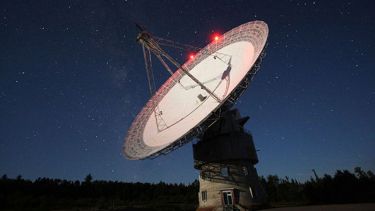Introduction to interstellar molecules
This introduction to the spectroscopy, mainly by radio astronomy, of interstellar molecules was written five years before the discovery of C60.
It covers an introduction to interstellar medium and molecules, spectroscopy (mainly rotational microwave spectroscopy) as well as infrared and electronic spectroscopy. Astronomical technical issues are discussed alongside early observations prior to 1980.
Specific sources as well as the chemistry of the interstellar medium and early ideas on the Diffuse Interstellar Bands DIBs prior to the discovery of C60 are also discussed.
Overview
This introduction to the field of interstellar molecules considers the spectroscopic observations which have led to the identification of more than 50 molecules in the interstellar medium. Although it concentrates on the results of radio studies, mainly because these have up to now been the most revealing, optical and infrared discoveries are also reviewed and placed in perspective.
The radio data yield information about the very cold regions whereas the infrared data yield information about the warmer regions where stars are forming. Optical emission studies can give information about extremely hot regions near stars and absorption studies give information about the cold regions.
The review begins with a historical introduction to the field followed by a brief overview of the interstellar medium and its relationship with other objects in the universe in the second section. The third section is devoted to an understanding of the relevant types of spectra, mainly rotational, and salient astronomical details which pertain mainly to radio observations.
In the fourth section the optical, radio and infrared spectra of various molecules are individually discussed and some of the most important regions where molecules are found are described. The various interstellar chemical pathways currently being actively studied are discussed in the fifth section.
In the final section some of the more important outstanding problems and possible future research avenues are highlighted. The overall perspective is a spectroscopic one in which the value to chemistry of these studies is deemed as interesting and significant as the value to astronomy.
Introduction to interstellar molecules - Part 1, Introduction (PDF, 320KB)
Introduction to interstellar molecules - Part 2, ISM (PDF, 383KB)
Introduction to interstellar molecules - Part 3, Spectroscopy (PDF, 733KB)
Introduction to interstellar molecules - Part 4, Astronomy (PDF, 331KB)
Introduction to interstellar molecules - Part 5, Specific sources (PDF, 775KB)
Introduction to interstellar molecules - Part 6, Chemistry (PDF, 277KB)
Introduction to interstellar molecules - Part 7, Discussion and references (PDF, 1.01MB)

